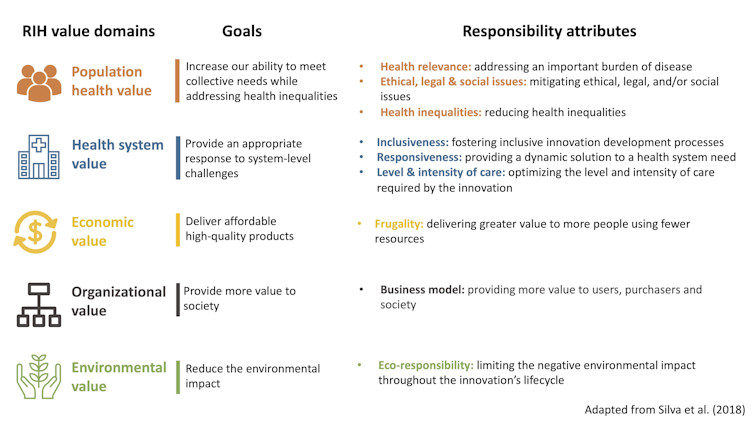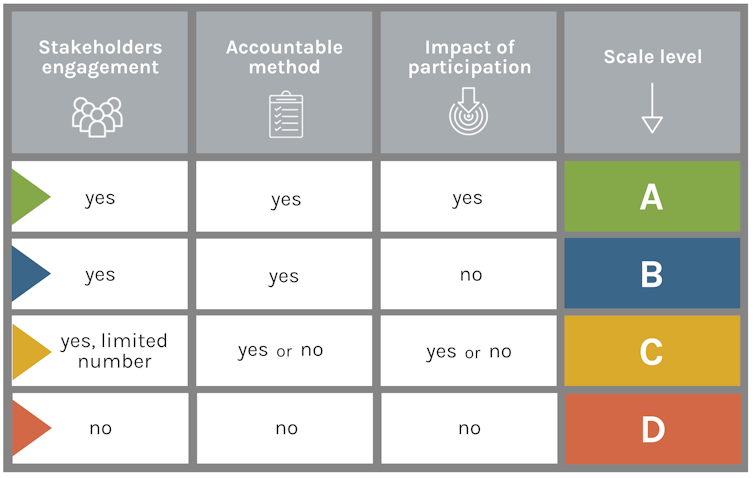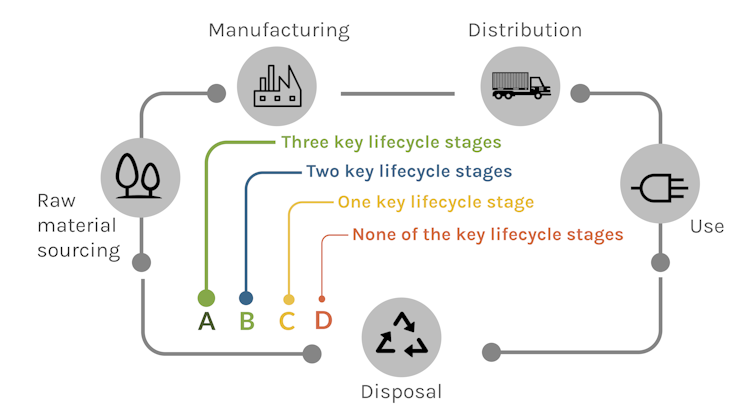
While Apple CEO Tim Cook believes “the future is responsible innovation,” management scholars warned of a trend of “responsibility washing” nearly a decade ago. Time, unfortunately, has proven them right. Over the past few months, generative AI tools such as ChatGPT have become the latest technology to raise concerns of responsibility washing.
Much like greenwashing tarnished sustainability efforts before the establishment of standards and norms (such as the ISO 14001 environmental management standards), responsible innovation (RI) is threatened by responsibility washing.
Just as greenwashing creates a misleading guise of environmental responsibility for a product or organization, responsibility washing creates the impression of RI without making discernible efforts to address important social responsibility issues like health equity, affordability and sustainability.
RI aims to reduce the negative impacts of innovations on users and society by transforming how innovations are developed. But the lack of a standard definition of RI, practical tools or clear assessment criteria and methods can lead to responsibility washing an innovation, whether intentionally or not.
New health technologies raise complex economic, social and environmental risks and harms in addition to clinical safety and efficacy concerns. That’s why our research team of RI experts tackles responsibility washing in this sector.
How does responsible innovation apply to the health sector?
Readers may wonder: Why does the health sector need RI? Health innovations are highly regulated to limit risks and harms. Their purpose is to save lives and make people feel better. Good technologies are developed with clinicians and patients to better meet their needs. Aren’t they already responsible?
In 2015, our team of Canadian and Brazilian researchers set out to better understand how RI applies to the health sector in both mature and emerging economies. This included:
- conducting a comprehensive review of research;
- interviewing over 85 experts in fields such as entrepreneurship, engineering, industrial design and health technology assessment;
- conducting a four-year case study with small- and medium enterprises, and
- implementing a collaborative process with experts to derive practical guidance.
This research led to the Responsible Innovation in Health (RIH) framework, which aims to foster “high quality and safe health innovations that also: strengthen health system equity, provide more value to users, use fewer resources, are good for the environment, and are economically viable.”
RIH brings together five areas of value, each defined by a specific goal and responsibility attributes (or elements) that extend beyond clinical safety and efficacy standards: population health value, health system value, economic value, organizational value and environmental value.

In addition to clearly defining RI for the health sector, our team developed a tool that informs design decisions, and an assessment tool that measures the degree of responsibility of a health innovation.
The RIH Design Brief is a practical tool for innovators that explains how to integrate the nine RIH responsibility attributes throughout the innovation’s lifecycle: ideation, design, development, commercialization and end-of-life disposal.
The RIH Assessment Tool then measures the extent to which each responsibility attribute is fulfilled. This tool was validated by international experts and was confirmed reliable through an inter-rater agreement assessment.
Both the design brief and the assessment tool rely on the four-level rating scales for each attribute, where “A” represents a high level of responsibility and “D” indicates that there are no particular signs of responsibility.
For example, let’s take a closer look at the rating scales of inclusiveness and of eco-responsibility — two issues rarely addressed by health technology assessments.

Inclusiveness is measured by assessing whether the innovation team formally consulted with a diverse group of people who may be affected by the technology, and explained how that group’s input was integrated into the design. Formal methods include both consultation (such as surveys) and engagement methods (such as round tables).
Eco-responsibility is measured by examining the number of key lifecycle stages where the innovation team applied eco-responsible practices, including raw material sourcing, manufacturing, distribution, use and disposal.

Building a responsible health innovation path
By integrating RIH attributes during the concept, design and development stages of an innovation, innovators can ensure that the key economic, social and environmental responsibility issues raised by their health innovation are identified and tackled in a measurable way.
This is a complex process, so the RIH Design Brief offers practical guidance with an original design-thinking tool called the Responsible Design Compass. A multidisciplinary toolbox also indicates where innovators can work towards RIH goals using existing tools, such as FDA’s human factors engineering, IDEO’s photojournal or B Corp’s impact assessment.
Once the innovation is completed and ready for use, policymakers, health-care managers, investors, technology transfer offices, philanthropic foundations and patient groups can apply the RIH Assessment Tool to inform investment, purchasing or implementation decisions.
The goal of RIH is to prevent responsibility washing by setting a new path for responsible health innovation. It provides the tools and practical guidance for innovators to be accountable to users and society from ideation through end-of-life disposal.
Pascale Lehoux receives funding from the Canadian Institutes of Health Research (CIHR). Her research group is supported by the Fonds de la recherche du Québec-Santé (FRQ-S).
Hudson Silva and Lysanne Rivard do not work for, consult, own shares in or receive funding from any company or organization that would benefit from this article, and have disclosed no relevant affiliations beyond their academic appointment.
This article was originally published on The Conversation. Read the original article.







